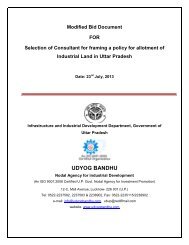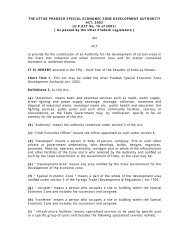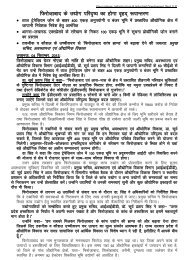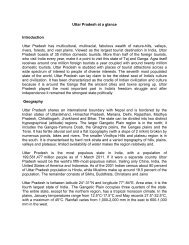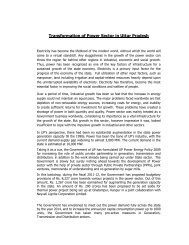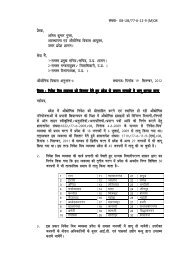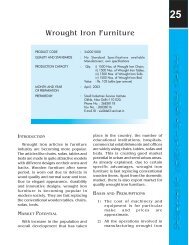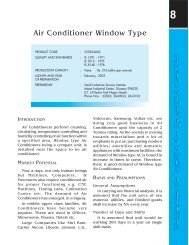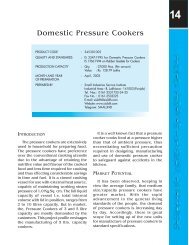PART - III - Udyog Bandhu
PART - III - Udyog Bandhu
PART - III - Udyog Bandhu
Create successful ePaper yourself
Turn your PDF publications into a flip-book with our unique Google optimized e-Paper software.
e sold or put to alternate use by the strategic partner. However, certain economic benefitsfrom such assets would still accrue to an extent to the strategic partner as the owner of majorityinterest in the company. Accordingly, while the asset valuation method may not provide thebest estimate of the value of the enterprise, application of this approach to surplus assets wouldhelp provide a better assessment of the Reserve Price. In practice, it has been used so far forvaluing the CPSUs under disinvestment because the Disinvestment Commission hadrecommended that this method should also be followed for valuation in the case of strategicsale.The Asset Valuation approach suffers from certain very serious limitations. These are detailedbelow:(i) Practically, it is extremely difficult to determine the exact replacement cost of the assetsowned by a company. This is so on account of number of reasons, such as(a) changes in technology over a period of time (resulting in certain products not beingproduced at all or being produced with far more efficiencies than earlier)(b) absence of a marketplace where such assets are or can be traded(c) inability of the seller to be able to actually realise the value of assets in one go shouldthe company be liquidated(d) changes in the duty structure (like excise, import duties, etc which may impact thevalue of the asset over different periods of time) etc.(ii) The Asset Valuation approach also does not take into account the very purpose for which acompany acquired the assets, i.e., for future economic benefits. Hence, the historical orreplacement cost of a particular asset may tend to convey a wrong picture of the value thatthe buyer may perceive in the asset. These factors often tend to result in a higher valuebeing attributed to the assets and the companies, if the asset valuation approach isfollowed. Assets are bought and sold for their future economic benefits, and forestablished and running businesses; the economic benefits of owning the assets are farmore relevant than the historical cost or replacement cost of the assets.(iii) The Asset Valuation approach also tends to overlook the intangible assets that a company,over a period of its existence tends to build, such as goodwill, brands, distribution network,customer relationships, etc, all of which are very important to determine its true intrinsicvalue.(iv) In the case of a majority of the PSUs it may be found that the replacement cost orliquidation value is higher than the intrinsic value of the company, if determined on thebasis of the company's future profitability (cash flows). As against this, a company, whichhas been generating very healthy returns and has built strong brand equity, goodwill etc.,will tend to command a value that is far higher than the value of its tangible assets.The abovementioned limitations of the asset valuation approach have been highlighted veryclearly in the valuation reports submitted by the Advisors in different cases of valuation so far.In case of strategic sales, the Advisors have expressed that the Discounted Cash Flow approachmay be the most appropriate methodology to be relied upon for valuing businesses on a goingconcern basis.148




